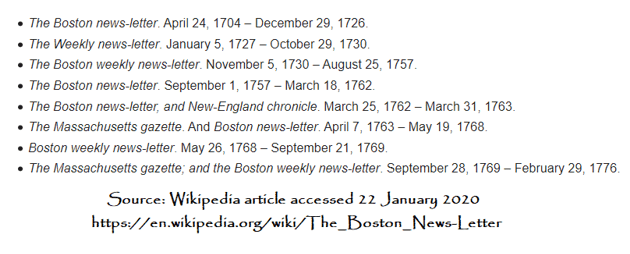Introduction: In this article, Mary Harrell-Sesniak begins a series examining our earliest newspapers by focusing on the first two newspapers in America. Mary is a genealogist, author and editor with a strong technology background.
If you’re looking for a project for your kids, or want to take on a new project for yourself, look up the first time a historical newspaper was printed. You never know what you will find. One day it will be a birth or marriage notice, and the next you might even discover a report of a famous pirate you assumed was a legend!
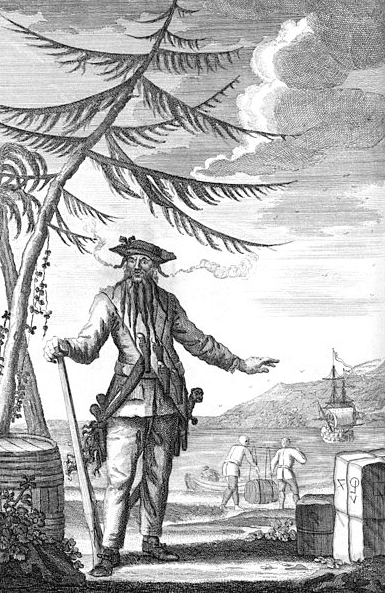
Either way, you won’t regret this journey as it’s a fascinating look at the place where our genealogical research begins every day at GenealogyBank.
Whens and Wheres of Newspapers
Not only that, but knowing when a publication started, where it was published, and when it went out of print is an important concept for genealogy. When a newspaper isn’t available in an ancestral location, you can look to neighboring areas’ newspapers for birth, marriage, death and family notices.
So, let’s start at the beginning. What were the first newspapers published in America, did they have an important history, and can we find them in GenealogyBank? These first newspapers are rich with American history – although you could write novels about them, I’d like to start, with this blog article, by quickly spotlighting the first two newspapers in America – both of which are available in GenealogyBank.
Publick Occurrences Both Forreign and Domestick (25 September 1690)
The oldest newspaper known to have been published in America was Publick Occurrences Both Forreign and Domestick.
This was during Colonial times and it consisted of four 6-by-10-inch pages, but only three were filled. Editor Benjamin Harris, with printer Richard Pierce (or Pearce), published it in Boston without permission from British authorities – so it was very short-lived. Four days after publication, a broadside was issued by the Colonial Governor forbidding the publication of “anything in Print without License first obtained from those that are or shall be appointed by the Government to grant the same.”

As you can read from the mission statement below, they wanted their newspaper to be published once a month “(or if any Glut of Occurrences happen, oftener).” Sadly, due to the disapproval of the authorities, this was the only edition of the paper.
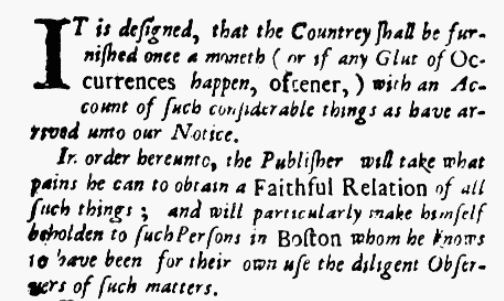
Note that in this first mission statement of America’s first newspaper, the publisher pledged to be impartial and truthful:
“In order hereunto, the Publisher will take what pains he can to obtain a Faithful Relation of all such things [as have arrived unto our Notice]; and will particularly make himself beholden to such Persons in Boston whom he knows to have been for their own use the diligent Observers of such matters.”
Benjamin Harris explained he had three reasons, or purposes, for his newspaper:
- “That Memorable Occurrences of Divine Providence may not be neglected or forgotten, as they too often are.”
- “That people every where may better understand the Circumstances of Publique Affairs, both abroad and at home; which may not only direct their Thoughts at all times, but at some times also to assist their Businesses and Negotiations.”
- “That some thing may be done towards the Curing, or at least the Charming of that Spirit of Lying, which prevails amongst us, wherefore nothing shall be entered, but what we have reason to believe is true, repairing to the best fountains for our Information.”
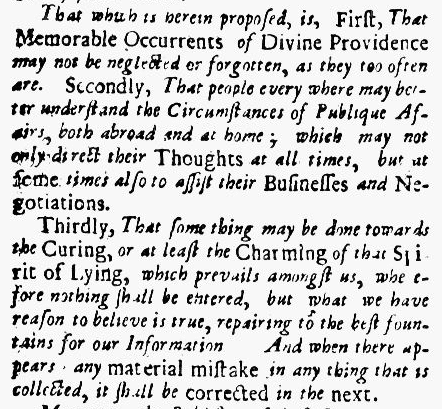
Pierce is believed to have died in 1691, not long after his wife Sarah Cotton Pierce died around 1690. The editor Harris (1673-1716) also has the distinction of having published the first textbook in England. Publick Occurrences wasn’t the first publication he printed without permission – which may have been why he left London and came to America around 1686. Later he returned to England and was arrested in 1695.
The Boston News-Letter (24 April 1704)
When the second known newspaper in America was published, the Boston News-Letter, Postmaster, Loyalist and Scottish native John Campbell (1653-1728) did obtain approval. To no surprise, most of the news pertained to Scotland and England. Later the newspaper was transferred to the printer Bartholomew Green, and subsequently to his son-in-law John Draper, then to his son Richard Draper, and finally to Richard’s widow Margaret, making it the first family-owned newspaper in America.
It also has the distinction of being the first continually published newspaper in America, and also the printer of the first death notices.

Under the masthead it states that the paper was “Published by Authority,” which would have been with permission of the Colonial Governor.
One of the most interesting articles published in the Boston News-Letter is this obituary for Peregrine White, who was born onboard the Mayflower in Cape Cod Harbor when the Pilgrims arrived in November 1620!
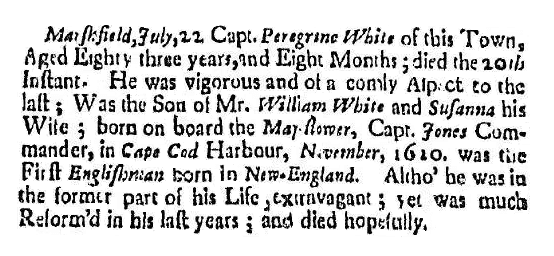
Note in the following article the alias of Captain Edward Teach. Like I said, you never know when you might run across stories about pirates!
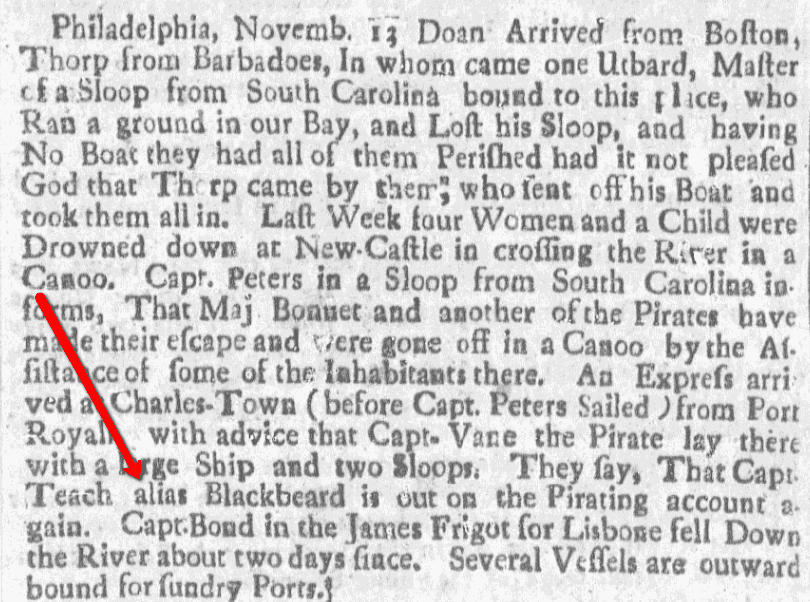
According to research, the Boston News-Letter was published under a variety of derivative titles with varying editors. It ceased publication in February of 1776 just prior to Evacuation Day in Boston (17 March 1776.)
Watch for upcoming blog articles on our iconic early American newspapers – and don’t forget to browse these previously published articles:

